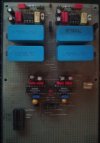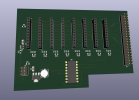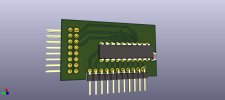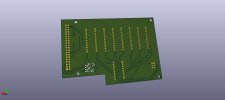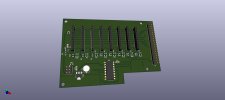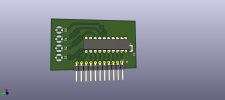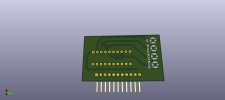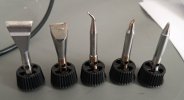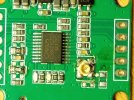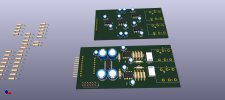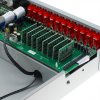@Frunse: Do you have any data to support those circuits would be better than the digital VC in your DAC chips?
CD4051 analog switch has THD of 0.15% - 0.3% - check the datasheet. No noise figure, but I kind of do not think your circuit with so many resistors and opamps in the signal path will be ultra low-noise.
PGA2310 is much better, but IMO still comparable to a good DAC chip volume control.
IMHO any integrated analog volume control has no benefit compared to a good DAC chip (of course unless some unwanted-peak safety is considered). A well-implemented signal relay attenuator is probably superior to the digital volume control. Maybe even that would not surpass well-implemented top ESS DAC chips.
Yes but the CD4051 is connected to Virtual Ground Point of that Opamp, so the THD of an CD4051 doesn't matter. there is always 0V at this Point, Thats the Magic on that Design

! You could also use Relays or an Dac Ladder there but i guess there are no Differnces because its 0V all the Time on that Devices.
But would like to compare / test it.
The Muse 72320 seems to be better than the PGA2310, but need more Parts specialy bigger Caps 4x 100uF/25V around the Chip. Thats Matter if yuo need 8 Chips of them on a PCB / Enclousure.
Did already a Board Design for Stereo but not ready yet, i split it to an XLR Inputboard and the Muse Chip with Outputboard. You could Connect than 8 of that Boards to one Motherboard. (Thats around 50-60Euro only in Parts for Stereo without the Board

)
The Basic Design's (PGA, MUSE, and other) i found here:
https://hifiocean.com
I relay want to compare all possibilities.
PGA2310 i have already for testing.
Relaisboards also i have here but also there, i gues i need an Buffer OPAMP on the Outs for 5-10M XLR Wirelength Driving. Input is 4VRMS but on Out it will be halve or less.
So many Options and at the End without any of them it sounds the Best LOL

Probably
By the way, ELEKTOR did measure his CMOS Switchboard with that CD4051 (Volume) and CD4053 (Inputswitching) and got this Value with old NE5532 OPAMP's:
Noise >110dB @ 1V 20kHz
Channelseperation >110dB @ 1V 20kHz
THD <0,005% @ 1V 20kHz
THD <0,01% @ 3V 20kHz
Max possible Vout = 3,5V RMS RCA (7V RMS XLR)
So like i told above the bad Value's of the CD4051 didn't Matter i guess

Robert

